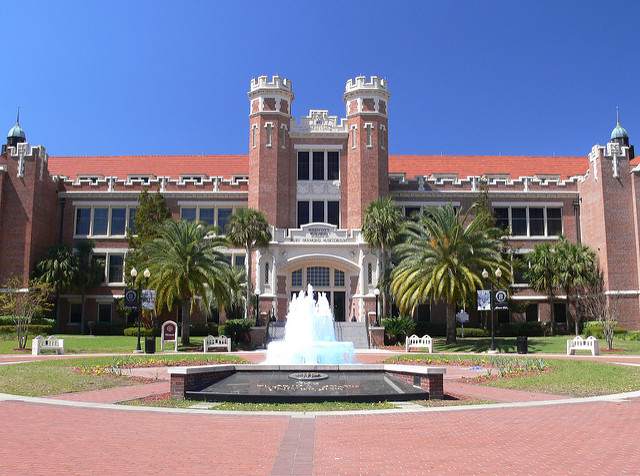By Ana Ceballos, The News Service of Florida
TALLAHASSEE — Gov. Ron DeSantis, state lawmakers and university officials on Monday bragged about Florida State University and the University of Florida moving up in the rankings of an annual report that grades the country’s top public colleges and universities.
The news of the universities’ improved status in the U.S. News & World Report’s “2020 Best Colleges” prompted the governor to visit both campuses Monday morning to tout their success.
Appearing at FSU in Tallahassee Monday morning, DeSantis lauded the school’s “remarkable ascent” since 2016, when it ranked 43rd in the nation among state universities. This year, the institution was named the country’s 18th-best public university.
“From being in the 40s to now being in the top 20, really ascending toward the top 15 — that is a big, big deal,” DeSantis, a Yale University grad and Harvard Law School alum, said. “That does not happen by chance, it is a result of hard work.”
During a visit to the University of Florida in Gainesville, DeSantis praised the school’s “steady improvement.” UF was named the seventh-best public university in the nation, climbing up from No. 19, back in 2012.
The metrics considered by U.S. News for overall top-university ranking include the time it takes students to complete degree programs, the cost of tuition, student debt amount at graduation, faculty resources, and graduation rates of students who receive federal grants, which are typically given to low-income households.
FSU President John Thrasher told reporters on Monday he hopes the Florida Legislature will see a “return on investment” by boosting performance and preeminence funding for the state’s top-tier universities.
During the 2019 legislative session, state lawmakers passed a number of bills that would bring changes to the higher education system, including a measure that directs the Florida Board of Governors, which oversees state universities, to propose a new method for distributing money tied to each school’s performance.
Budget writers included language in the state’s $91.1 billion spending plan, which went into effect on July 1, that would require the Board of Governors to develop recommendations for “separate and distinct performance-based funding models.”
“The model should recognize each university’s continuous improvement and achievement of institutional and national excellence,” the budget language said.
In mid-May, Florida held the number-one spot in the U.S. News ranking for higher education. It was the third year in a row the state’s higher-education system was named the nation’s best.
The state achieved the best-in-class ranking based, in part, on its low tuition costs and the success of its state college system, where a large share of students complete two-year degree programs within three years.
Senate President Bill Galvano, R-Bradenton, said he looks forward to working with state lawmakers and partners in both the state university and college systems to provide resources to the state schools during the 2020 legislative session, which starts in January.
Thrasher, meanwhile, touted opportunities the state’s higher-education system offers to Floridians. In-state tuition for Florida students is about $6,500 a year, which the governor called a “bargain.”
The FSU president noted his school has moved up in the ranks without raising costs for students.
“We have not built our success around tuition, we have built it around other programs that the Legislature has provided to us and have allowed us to increase our faculty and the programs we are offering,” Thrasher said.

